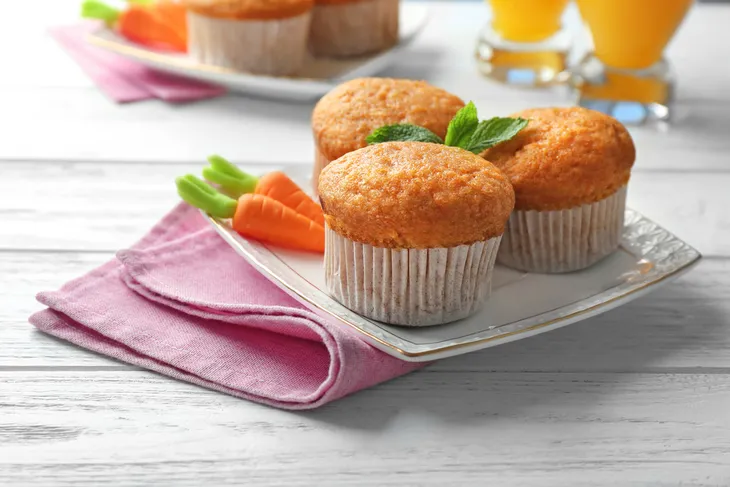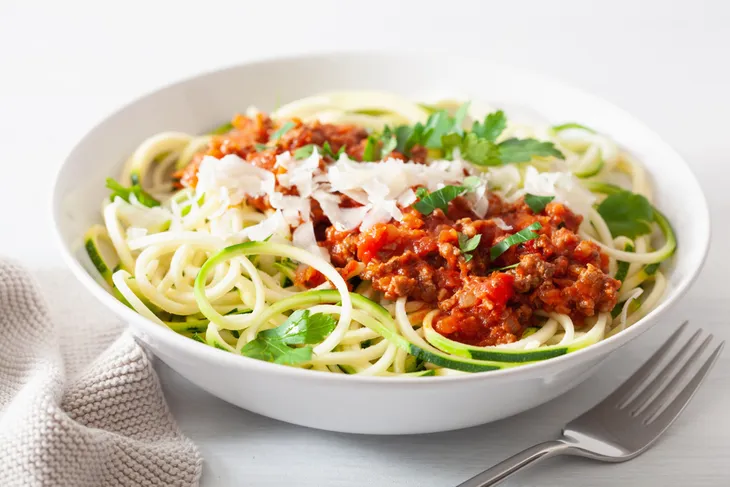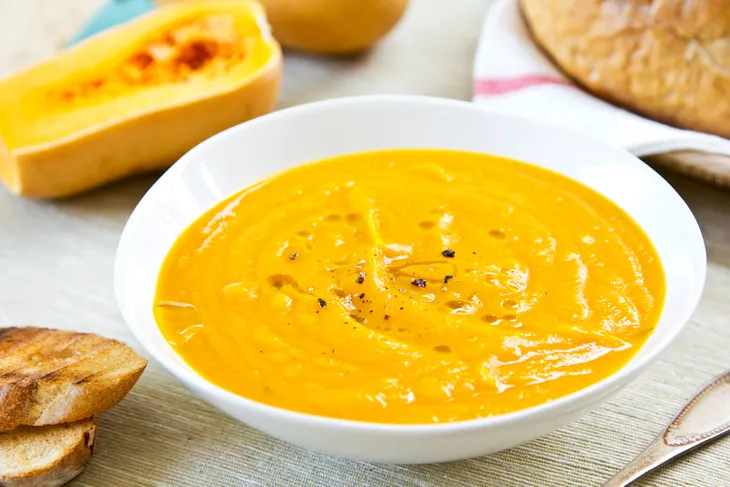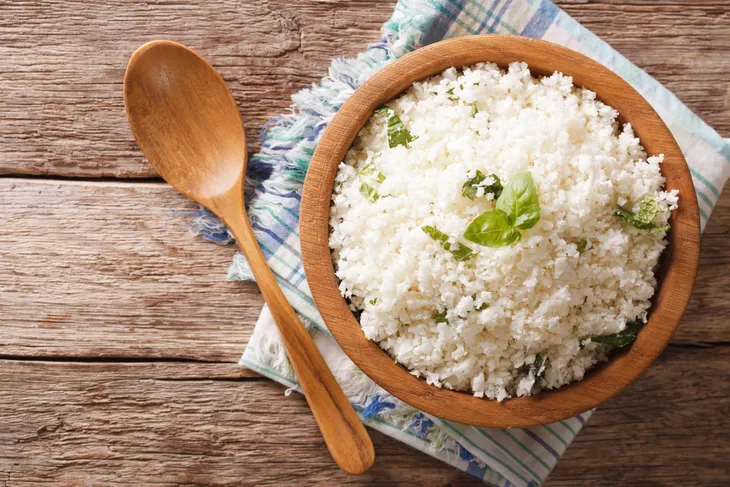If you have kids of your own, I probably don’t need to tell you how hard it can be to get them to eat their veggies. It’s a parents job to worry about our kids’ nutrition and they don’t make it any easier when they turn their little noses up at anything that looks remotely suspicious.
You can try offering them Nature’s bounty over and over again and eventually they might just try something, but there are easier ways to get those veggies in, you might just have to be a little bit crafty. Sometimes the only way to make sure your kids get their veggies is to disguise, blend, or sneak them into some of their favorite foods. Here are eight versatile veggies you can easily sneak past your kids…
Carrots
If there’s one vegetable that you can usually sneak past your kids without suspicion, it has to be carrots. Their mild sweet flavor is pretty pleasing to kids’ palettes, though it can still be difficult to get them to take that initial bite. There are a few ways to disguise them however, and baking is a great way because carrots add sweetness and moisture to any recipe.
Carrot muffins are easy to make and work well for a breakfast or lunch treat that’s packed with hidden veggie goodness. Kids usually like pasta with tomato sauce, and you can give your regular sauce recipe an added vitamin boost by adding grated carrot and cooking it into the sauce. The orange color will blend right in and it will give the sauce an added sweetness that the kids will love.
Zucchini
Zucchini is another vegetable that’s relatively easy to sneak into your kids’ favorite foods, mainly because it has little flavor on its own and adopts the flavors of the dish it’s added to. Like carrots, you can make with zucchini as well, or combine both vegetables to make a veggie packed muffin with tons of vitamins and nutrients.
Baking isn’t the only way to disguise zucchini however, you may have heard the term “zoodles” before, but if not pay close attention. Zucchini can be used to make faux noodles (also called zoodles) that look and taste pretty similar to spaghetti. You’ll need a spiralizer or julienne peeler but the small investment will be worth it when you see your kids eating a big bowl full of veggies, cleverly disguised as spaghetti with tomato sauce!
Peas
Peas are a bit of an underrated vegetable, but their wealth of vitamins, protein, and nutrients including branch-chain amino acids makes them highly beneficial for little growing bodies. Like carrots, peas have a naturally sweet flavor that kids find appealing, but sometimes it’s just that green color that puts them off.
If your kids are into eggs, try throwing a handful of peas into their next scramble along with some grated cheese. They’ll still see the peas in there, but the cheesy, eggy goodness might just make up for the healthy addition. If you need a sneakier solution, peas can also be pureed and added to soups, spaghetti sauce, pizza sauce and even added to homemade meatballs.
Beets
Beets can be a bit of a tough sell for the little ones, while their vibrant fuchsia-red color is nice to look at, their earthy flavor can be overwhelming for developing tastebuds. What beets do have going for them is their natural sweetness that can be disguised and used in other foods and baked goods.
Making beet brownies is a fun way to give the kids a treat that’s secretly packed with veggie goodness, and they won’t even know the beets are in there! Or for a more savory solution, try making a batch of homemade sweet potato and beet fries. The familiar shape and crunchy exterior might just be the ticket to getting your kids to eat their veggies without any complaining or crying.
Butternut Squash
Butternut squash is a popular fall and winter vegetable and it’s packed with vitamins and nutrients including vitamin A, antioxidants and B-complex vitamins. Unfortunately hearing the word squash doesn’t usually make many kids’ faces light up with joy, but there are a few ways to get the benefits of squash into your kids with a little culinary creativity.
Most kids love mac and cheese, and the creamy orange-yellow sauce is the perfect place to hide a bit of butternut squash puree, giving your mac a boost of beneficial vitamins. Pancakes, waffles and pizza sauce are also great places to sneak in some naturally sweet butternut puree, or if you want to get really creative, try making a batch of butternut biscuits and watch your kids devour them without any second thoughts.
Cauliflower
Cauliflower has seen a surge of popularity recently thanks to some creative ways of using this versatile veggie in many gluten-free recipes and wheat substitutes. This is great news for parents of picky little eaters because you can use the same methods to sneak some extra veggies into your kids’ foods.
Cauliflower ‘rice’ is a great side dish for the dinner table and while it takes a bit of prep work to make, it can be a great way to get some extra vitamins and minerals into your wee ones. Or if you need a more clever disguise, cauliflower can be used to create a tasty pizza base that your kids can top with tomato sauce and their favorite pizza toppings like cheese and pepperoni or ham and pineapple. A more straightforward approach is to whip up a batch of creamy, cheesy cauliflower soup or try adding some cauliflower into your mashed potatoes and topping with cheese and bacon.
Spaghetti Squash
A couple slides back we talked about the benefits of butternut squash and some clever ways to dress it up for your kids, but butternut isn’t the only squash that you can disguise as something else. Spaghetti squash is another fabulous fall veggie that you can take advantage of because of its unusual ability.
When cooked, the flesh of spaghetti squash pulls into long tender strands that are quite similar to spaghetti noodles. Since most kids like pasta, try swapping out the regular wheat noodles for a bowl of spaghetti squash with tomato sauce and mini meatballs. Top it off with some grated cheese and the kids might be able to tell the difference, but the taste will be so delicious that they won’t even care.
Avocado
Technically, avocado may be a fruit, but there’s no denying the benefits of this glorious green wonder. Avocado is rich in healthy mono-unsaturated fatty acids as well as vitamin E, which can strengthen your kiddies’ immune systems. The creamy texture can be appealing, but some kids are instantly put off by anything green (green means healthy and healthy means yuck!) but avocado can be disguised in a few creative applications.
First, you can make them into a delicious creamy dip like guacamole, but keep the flavours simple for the kids. You can also use them to create a rich, creamy sauce to put on your kids favorite pasta, or if you need a better disguise, go the chocolate route. Avocado, cocoa powder and honey can be whipped in a food processor to make a delicious chocolate-avocado pudding full of vitamins and nutrients, but all your kids will see is a delicious, creamy chocolate dessert.










